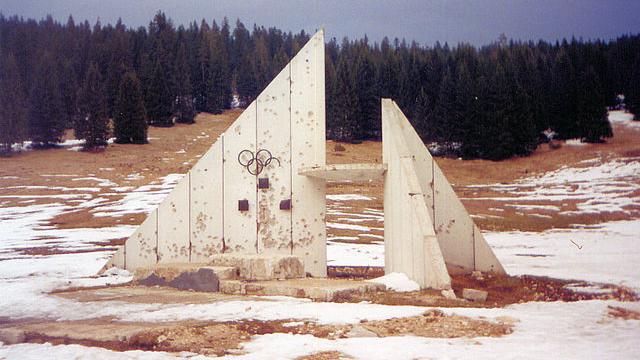The second life of Olympic structures is a challenge to manage for any host city. But none, perhaps, offer as stark an image as Sarajevo’s battle-scarred Olympic buildings. Eight years after the 1984 winter games, the Bosnian War left the city with buildings full of bullet holes, ski slopes dotted with land mines, and a graveyard just outside the very stadium that once held the opening ceremonies.
The bitter war lasted two and a half years following the breakup of Yugoslavia. As Natasha Gelling points out at the Smithsonian, Sarajevo became the site of the longest siege of a capital city in the history of modern warfare.
In what may be the grimmest repurposing of Olympic infrastructure, sites of former athletic glory became battlegrounds. Aluminium was stripped from race tracks to build bunkers, and Bosnian Serbs took advantage of the bobsled track’s concrete structures, turning it into an artillery stronghold. Holes — and, now, graffiti — dot the tracks. Right outside of Kosevo Stadium, a soccer field became a graveyard to bury some of the 10,000 people who died in the siege.

Bobsled track at Sarajevo. Credit: Luigi Torreggiani/Flickr
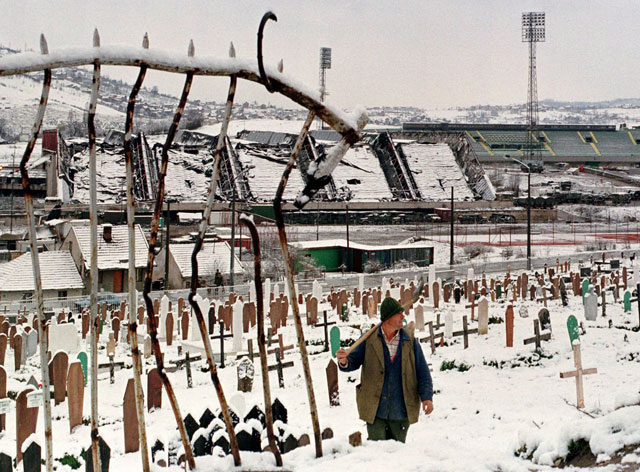
Gravedigger at the cemetery outside of Kosevo Stadium. Credit: AP Photo/Rickard Larma
In 1994, the New York Times described the contrast between the ruined city and the triumphant one that hosted the Olympics a decade ago.
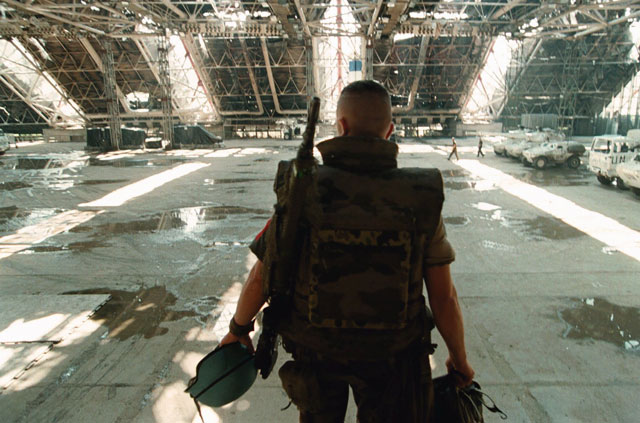
The 1,591 athletes from 49 nations lived in the Olympic Village at Mojmilo, where soldiers with Kalashnikov submachine guns slung over their shoulders quietly patrolled the electrified fences.
The apartments at Mojmilo, which had been rented for future occupancy before the Olympics began, have been battered by artillery and mortars, but the Muslims hold the ground.
Scott Hamilton soared to a figure skating gold medal under the snowflake-shaped roof of Zetra, a new $US20 million indoor arena where Vladislav Tretiak, the legendary Soviet goaltender, earned his fourth gold medal in his Olympic finale.
As a major target of Serbian artillery, Zetra is a burned-out shell. It is surrounded by graves.
Debbie Armstrong slashed to a gold medal in the women’s giant slalom at Jahorina, which a Yugoslav translated as having “no meaning in Serbo-Croatian. It is just a beautiful mountain, like a beautiful woman. But like a beautiful woman — watch out!”
Jahorina has always been under Serb control. Its ski-chalet hotels are standing, but they have no heat, no lights.
A French UN peacekeeper looks at the destroyed Olympic indoor stadium where the United Nations have set-up one of their bases in Sarajevo in 1995. AP Photo/David Brauchli
For a more optimistic take on present day Sarajevo, Gelling points to an interview with Jon Pack, one half of the duo behind The Olympic City, a photography project documenting what happens to host cities after the games.
In contrast to, say, Athens where guards stand watch over empty stadiums, Sarajevo’s Olympic sites were disintegrating, yes, but they weren’t walled off. As Pack told the Atlantic Cities:
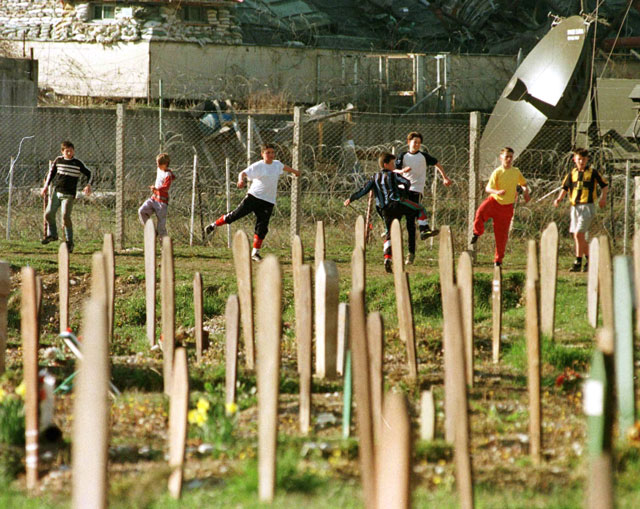
[T]he day I arrived, campers were having the time of their lives at the bottom of the hill. They were playing football and competing in a series of challenges they called, “Games Without Borders.” I saw this again at our other stops in Sarajevo — Olympic sites, ravaged by war, being reclaimed and used by regular folks.
Boys from a local athletics team exercise along the periphery of the former soccer field of the Kosevo Olympic complex in1997. AP Photo/Jacqueline Arzt
In the years since the war, Bosnia and Herzegovina has also tried to recapture some of the Olympic glory of its capital city. Skiers can take to the former Olympic slopes again, although land mines make going off-piste still a danger. The International Olympic Committee gave $US11.5 million in 1999 to rebuild the destroyed Zetra Hall, the site of the figure skating competition. Sarajevo also made a bid for the 2010 winter games, but the sentimental overture was easily rejected for practical reasons. The city’s infrastructure had not recovered enough to host an international event again.
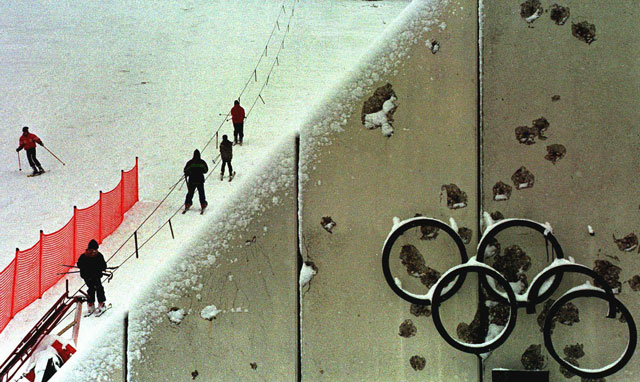
Mt. Igman’s ski venues reopening in 1997. AP Photo/Rikard Larma
The Olympic Games have always been inextricable from politics, and it was a big deal in 1984 for Yugoslavia to the first Communist country to host the winter Olympics. But the Games are also, perhaps, the healthiest outlet for nationalism. Every two years, our athletes wear our flags as they duke it out against foreign competitors. Emotions can run high, but it’s ultimately just for sport. [Smithsonian]
Top image: Hedwig Klawuttke/Wikimedia Commons
